Sun shines on hundreds for Anzac Day at New Zealand’s tūrangawaewae on the Western Front
Anzac Day, one of the most important commemorative dates of the year for New Zealanders and Australians, is quickly becoming a must-attend event in a small town in the north of France, Le Quesnoy.
For decades, this special community has marked this key date in recognition of the men who came from a country on the other side of the world to liberate the town in the final weeks of World War One. However, the inauguration of the New Zealand Liberation Museum – Te Arawhata – in 2023 has sparked a renewed interest in these commemorations, as the town celebrates the enduring friendship forged with Aotearoa over the past 107 years.
Under stark blue spring skies, hundreds of local Quercitans and travelling Kiwis flocked to Te Arawhata for a weekend to remember.
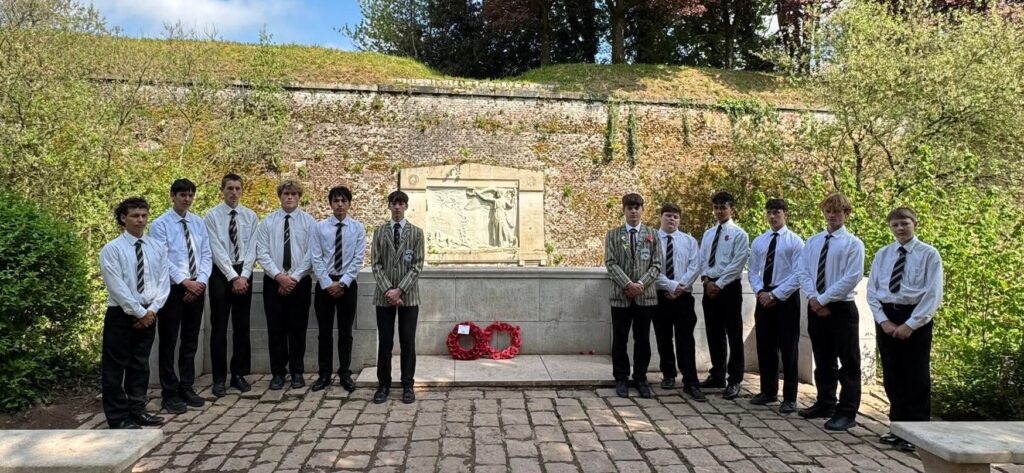
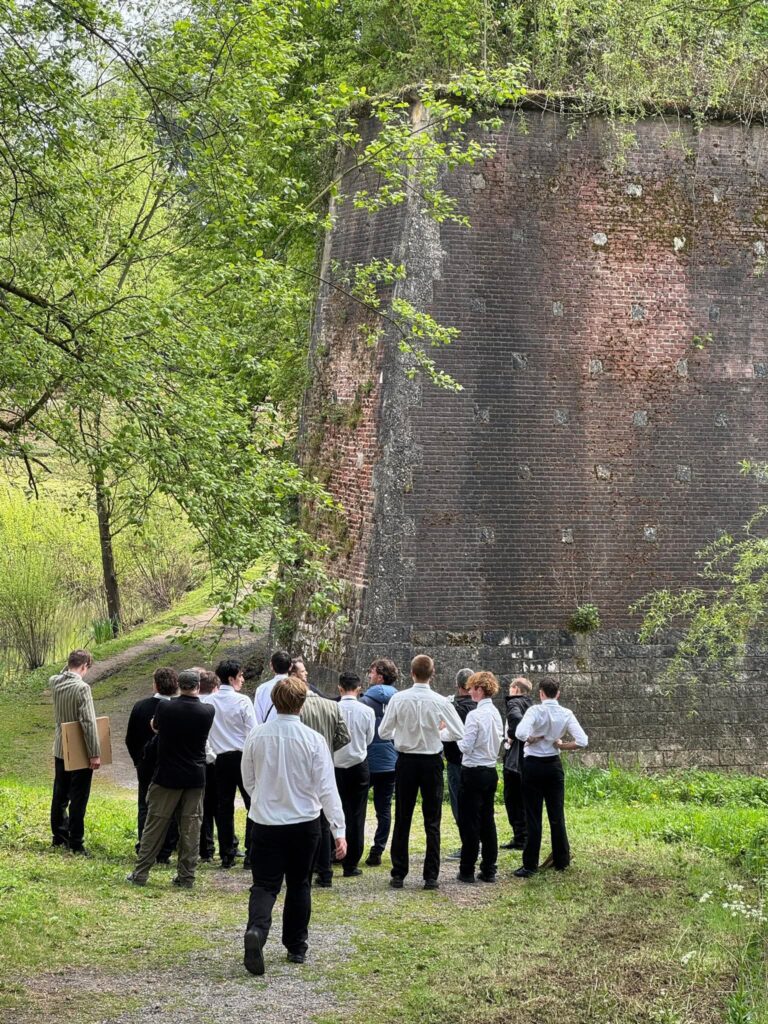
A poignant start to the weekend
Le Quesnoy has traditionally commemorated Anzac Day on the Sunday closest to 25 April, and with Anzac Day itself falling on a Friday in 2025, the stage was set for a full weekend of commemorative events and services.
Te Arawhata received a visit from New Plymouth Boys’ High School on Anzac Day morning, who, following a tour of the museum and Le Quesnoy’s ramparts, laid a wreath of remembrance at the New Zealand Memorial. Teacher Joanne Ander explained that it was important for the school group to “commemorate the fallen who came to liberate this incredible little town and to remember all the work of those who have come before us for freedom.”
The Museum’s Education Manager, Blandine Demailly, also welcomed dozens of students from local schools for workshops on the meaning of Anzac Day and the creation of poppy wreaths to adorn the Museum entrance foyer.
At 6 pm, the weekend’s official Anzac programme commenced with a Last Post ceremony in the Museum’s forecourt. Over 100 people attended this solemn occasion, which was made even more special by three readings of The Ode in French, te reo Māori and English by local students Néo Vasseur and Galahad Chermeux, Kaunihera Kaumatua o te hapu Ngati Taka Erica Wellington, and Malayan Veteran Bill Russell. Following the service, attendees enjoyed a short reception provided in collaboration with the Le Quesnoy-New Zealand Association, as the evening sun finally poked through the day’s earlier cloud cover.
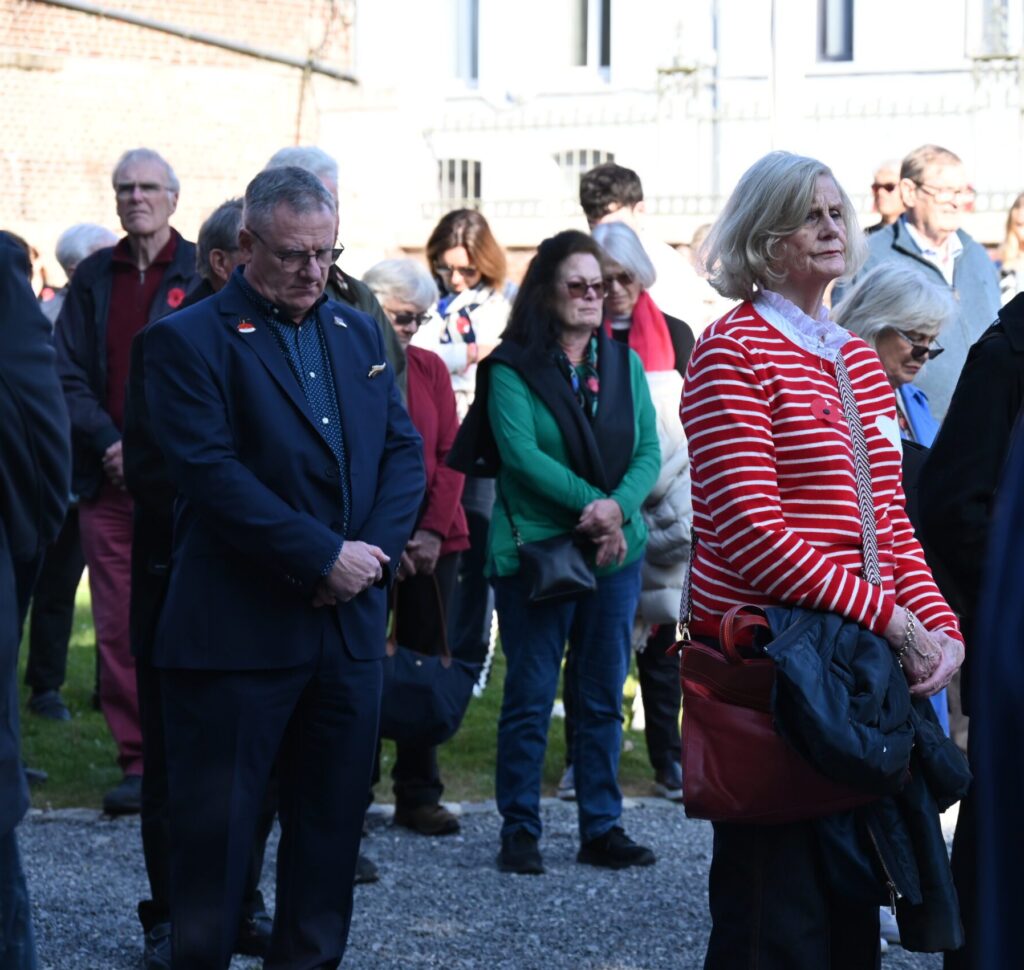
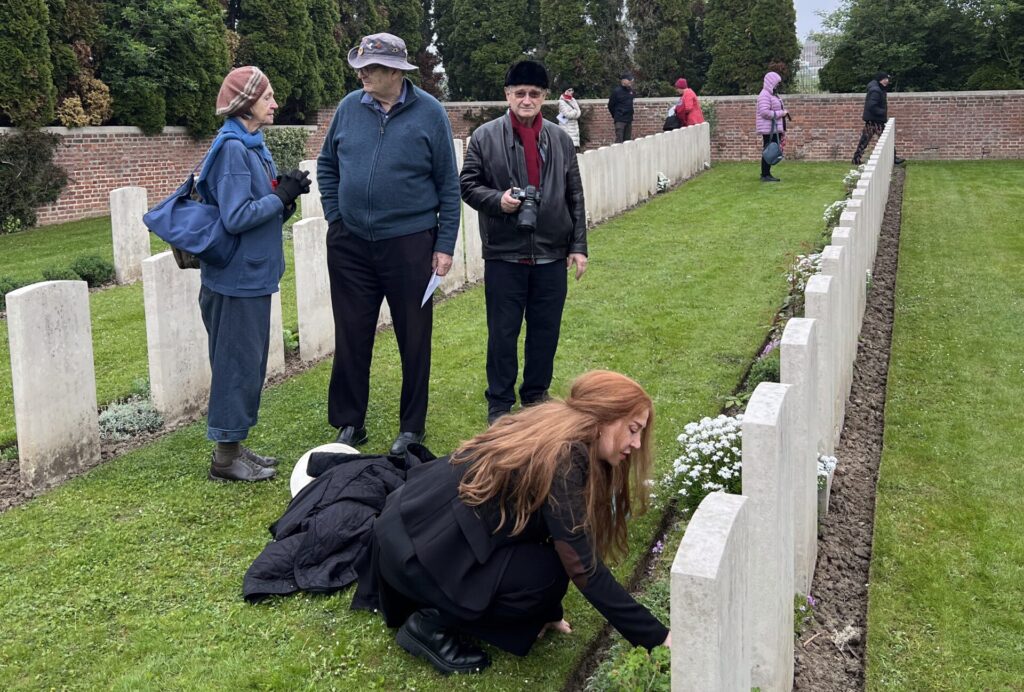

Paying respect to the fallen and the survivors
On Saturday morning, a small group of visitors marched from Te Arawhata to the Le Quesnoy Communal Cemetery Extension, the final resting place of 49 New Zealand soldiers.
There, a touching tribute was made to not only the soldiers who fell at Le Quesnoy, but also to those who made it back home. Kerrie Ashcroft read from the diary of her grandfather, Roy Cragg, a young Kiwi soldier who survived a gas attack to return to his farm in Picton after the War. Kerrie also read But I Was Looking at the Permanent Stars by Wilfred Owen – the famous British wartime poet who died on 4 November 1918, the same day as the liberation of Le Quesnoy – and was joined by two local children, Léane and Galahad, for a reading of Guillaume Apollinaire’s L’Avenir. The group closed this small but special ceremony by spending a quiet moment of remembrance with our fallen soldiers.
Tours of the Museum, Le Quesnoy, and three neighbouring towns liberated by the New Zealanders
Across the weekend, hundreds of visitors enjoyed guided tours of Te Arawhata and the ramparts of Le Quesnoy.
In collaboration with the Le Quesnoy-New Zealand Association, around 100 people also paid a visit to the towns of Beaudignies, Romeries and Vertigneul, three towns liberated by the New Zealand soldiers as they made their way towards Le Quesnoy.
The stop at Vertigneul was particularly moving, as the group stood before the grave of Henry James Nicholas, a recipient of the Victoria Cross in 1917 who died liberating Beaudignies on 23 October 1918.
Many of the visitors chose to walk the 4 km journey back to Le Quesnoy, retracing the steps of our troops in the final weeks of World War One.
The sunny weather also made the visits of several members of the Museum’s governing trust board even more enjoyable. Chair David McLean said that “being part of the 2025 Anzac Day commemorations in the spring sunshine of Le Quesnoy, and witnessing the genuine affection for New Zealand from the French people of the town, was a moving reminder for me of the value of friendship between different peoples and how friendship can endure – in this case for 107 years.”
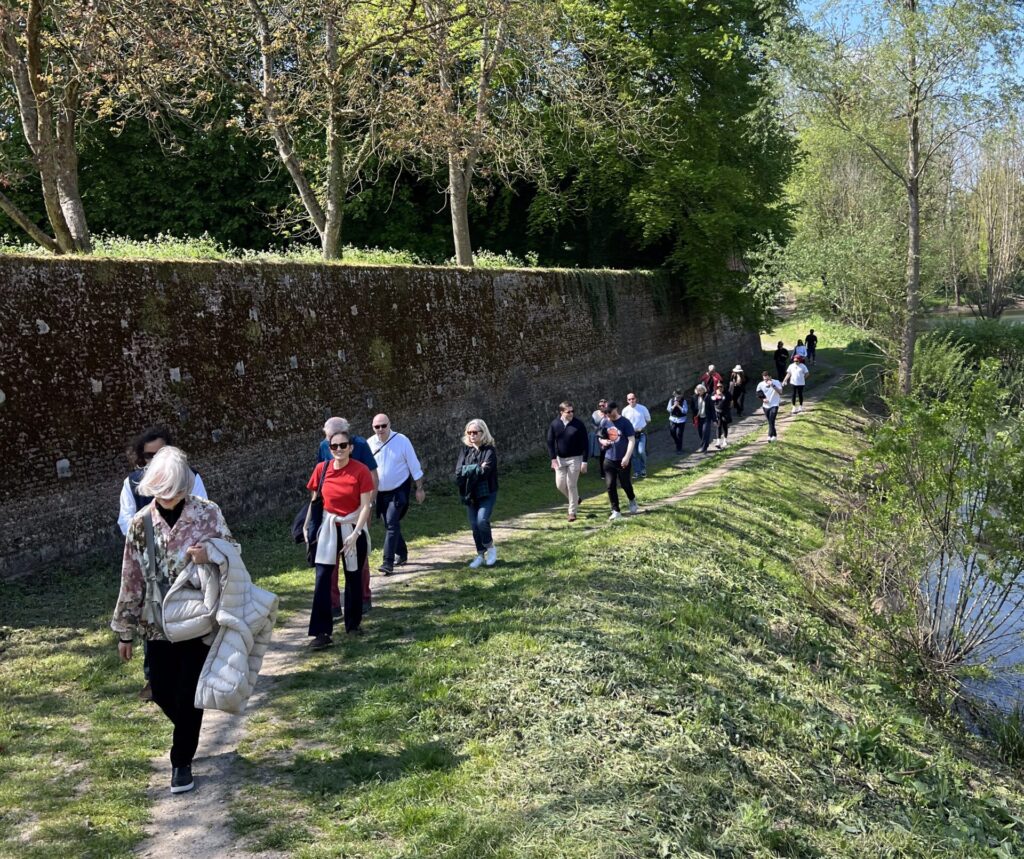
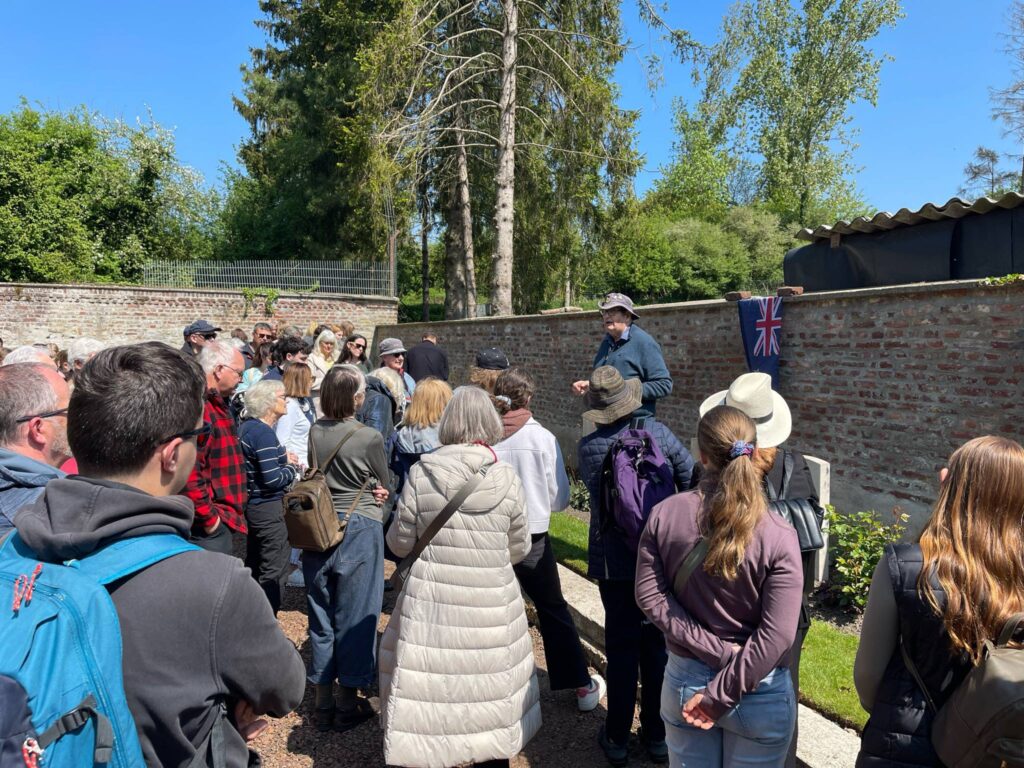
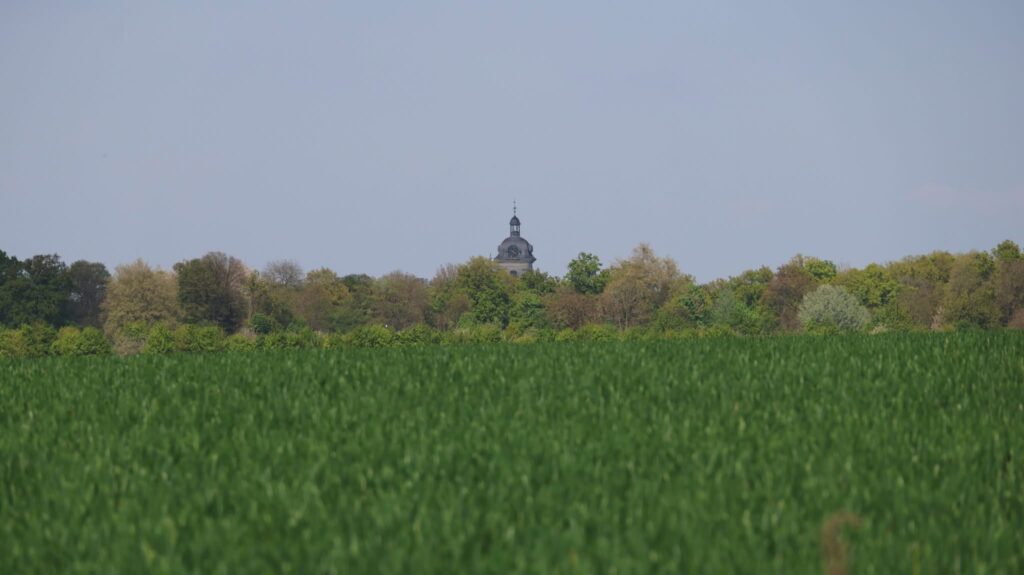
The Annual Anzac Dinner
Te Arawhata’s annual Anzac Dinner was once again a sell-out, this year with 160 attendees at Le Quesnoy’s Centre Lowendal function space. This event is a cornerstone of the weekend’s commemorations and celebrates over 100 years of friendship forged between this beautiful little town and the people of Aotearoa.

The event began with a spine-tingling karanga and haka powhiri by members of the London Māori Club, Ngāti Rānana. Once welcomed into the space, the formal portion of the night opened with speeches from Te Arawhata Director Elizabeth Wratislav, Le Quesnoy-New Zealand Association President Jean-Philippe Froment, and Mayor Marie-Sophie Lesne, who said “we, Quercitans, are proud of our history and this connection with Aotearoa New Zealand, and it is my honour to welcome you to our beautiful town.”
Attendees were treated to an incredible performance from Ngāti Rānana. Group lead Ben Appleton shared that “through haka, waiata, karakia and whakawhanaungatanga, we paid tribute to the māia (courage), tapu (sacredness) and aroha (love) of those who came before us – we remember those who came to liberate Le Quesnoy and those brave nga hōia (soldiers) who stayed forever.”
With the seating plan designed to envisaged to mix of Kiwi and French guests, the night proved another example showing that our differences are far fewer than our similarities.
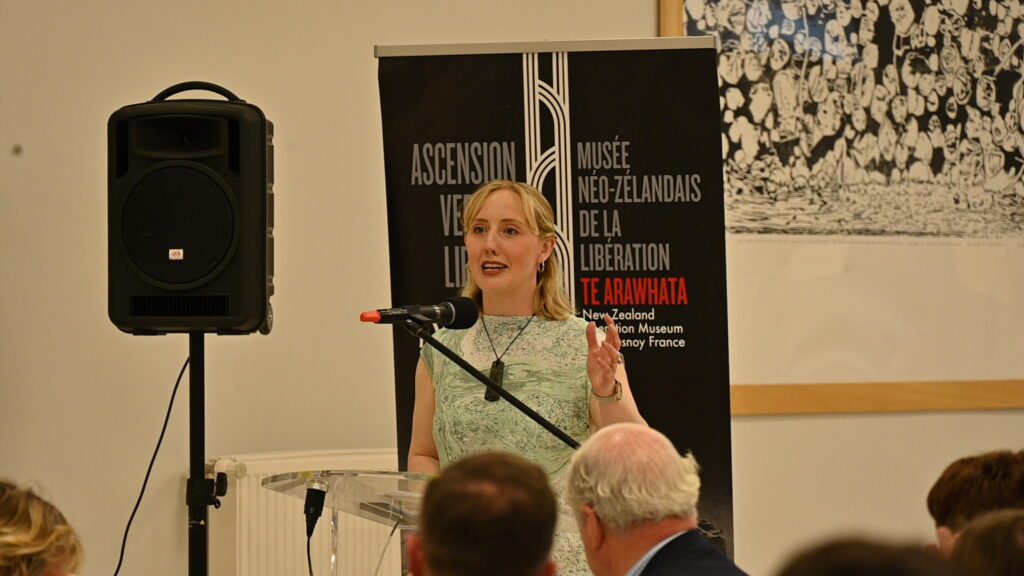
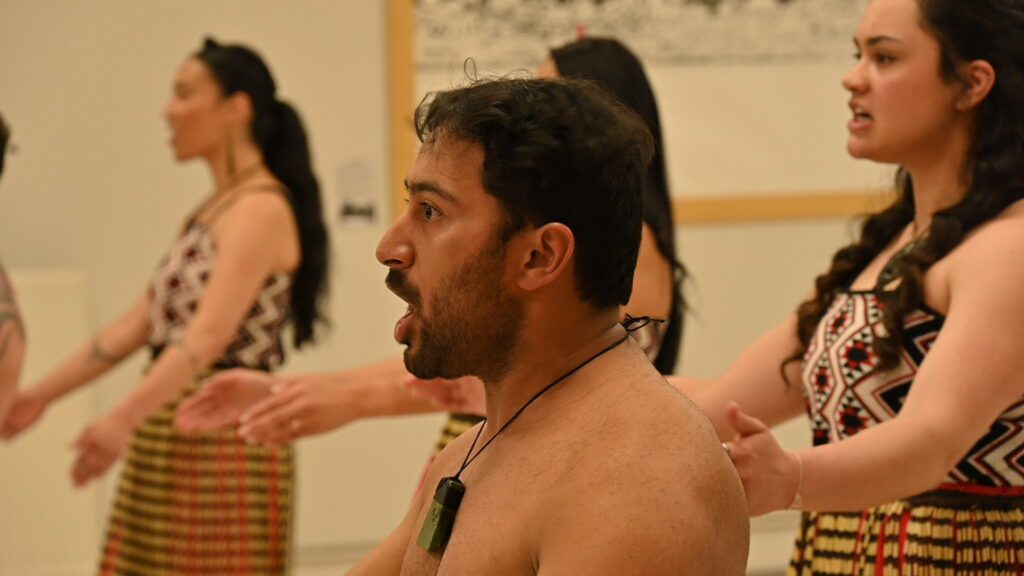
Sunday’s official commemorations
In keeping with the tradition, the town’s official commemorations took place on the Sunday closest to Anzac Day. More than 300 people met in the Te Arawhata forecourt before marching through Le Quesnoy and past the key commemorative sites of the New Zealand Memorial, the Eugène Thomas Memorial and the French Monument to the Dead.

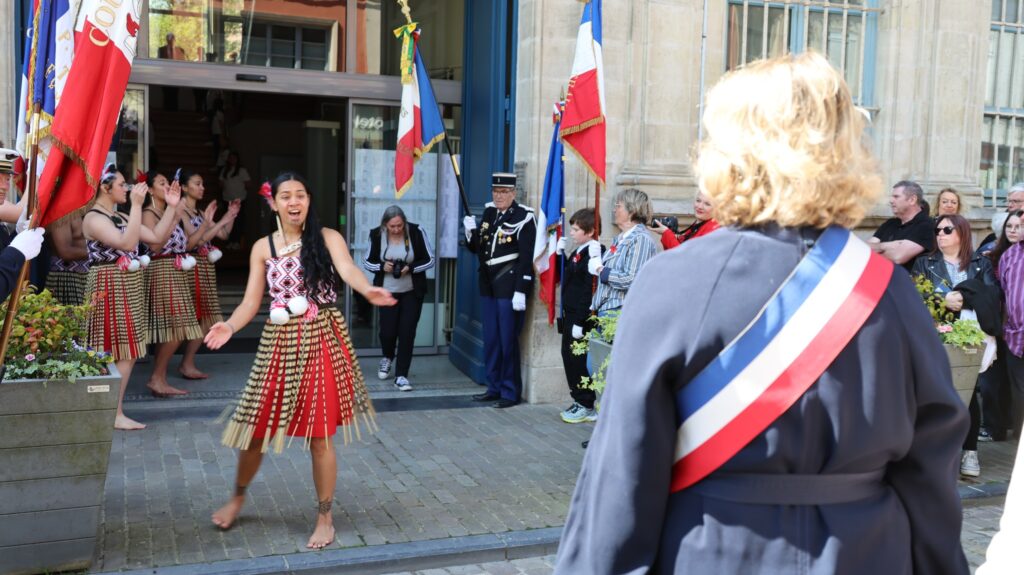
Our local dignitaries were joined by representatives from Australia, Canada, the United Kingdom and France, as well as by the Ambassador of New Zealand to France, Portugal, Monaco and the OECD, Caroline Bilkey, who has been a strong supporter of the ongoing friendship between our two places. “It is always a great pleasure to commemorate Anzac Day in Le Quesnoy, a town that holds a special place in many New Zealanders’ hearts, a living memorial to the courage and ingenuity of our soldiers”, she recounted.
Ngāti Rānana concluded the parade with another moving performance, their rendition of the famous Kā Mate haka proving particularly popular among the local participants.
The weekend wrapped up with the re-signing of the sistering accord between the towns of Le Quesnoy and Cambridge in New Zealand’s Waikato region. This special moment marked 25 years of the only Franco-New Zealander sister city relationship
Just the second of many more
2025 is only the second Anzac Day to take place since Te Arawhata opened its doors in October 2023. After initial success last year, the commemorations of the battle and celebrations of friendship continue to grow and there is little doubt that they have begun to establish themselves as highlights of the Le Quesnoy calendar.
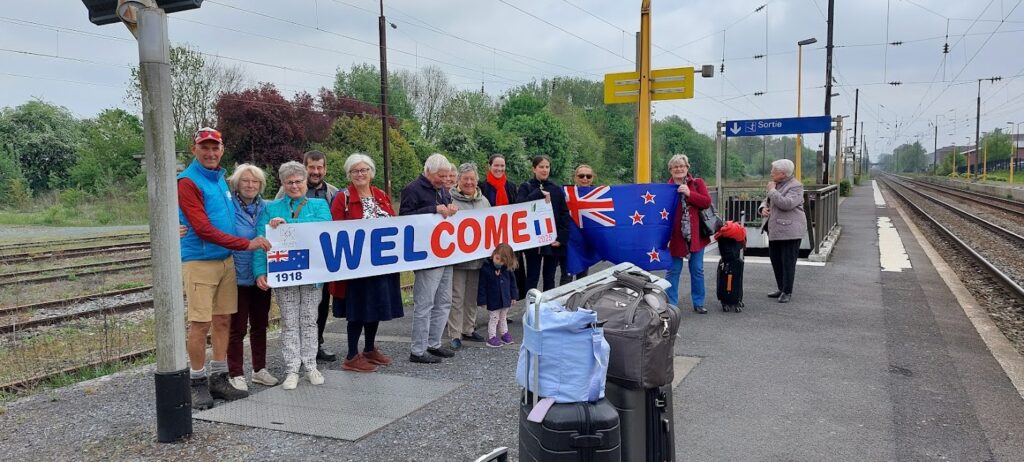
Elizabeth Wratislav summed up the weekend by expressing her gratitude for our visitors, both from the other side of the world and the next street over: “Your presence here this weekend keeps the memory of our soldiers alive and ensures this friendship will endure long into the future.”
